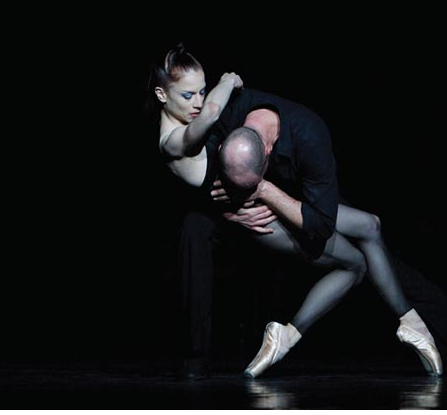The wisdom of Edouard Lock
One my last interviews as a reporter at a previous job was with world-renowned choreographer Edouard Lock, artistic director of Montreal-based dance company La La La Human Steps. It was Lock's innovative choreography that got me interested in contemporary dance at the age of 15 when I saw the possibilities inherent in his androgynous, muscular renderings of human movement and relationship.
So it was a real treat to get half and hour with him on the phone and pick his brain about what makes art and how his creative process works. He talks a lot about risk, both onstage and off, which you can read in the article here. I also wanted to include this outtake from our interview, I'd asked him how he finds the inspiration for his dances, this is what he had to say:
"Um, I find that there's — as society evolves and mutates and changes and alters, it does so sometimes more speedily, sometimes it does so more slowly, sometimes evolutionary, sometimes revolutionary, but there's always a subtext underneath the rational level, almost like a hidden code.
This dialogue is kind of — if you can use a bad allegory — the sea that carries the ice. The undercurrents, the movement, the very low, whispery, almost inaudible conversations are the ones that motivate the more defined, the more rational, the more understandable parts of the conversation that we see.
Those things are always there to be listened to. I think when artists create, they tend to block out the more obvious conversations and go and get the ones that are actually seeding it or defining it or beginning it.
It's a different kind of listening, you don't listen so much with your ears. You listen more the way you would in a dream, you open yourself to contradictory kind of statements, which I think more is really what is going on. It's not a fully rational discourse, it's something that is more dream-like and society in some ways thinks aloud before it acts. And that thinking, which is often contradictory and doesn't make much sense, but it's there and I sort of open myself to listen to that discourse. But I don't try to make sense of it, I just try to — how should I put it — as building material.
It's hard to answer a question like that because the source is not saying a cut and dry thing, it's saying many different things and then it's going through your own filtering system, your own set of interests, your own history, the things you've already done, the things that you like to do, and then you basically hope that whatever you found interesting in that kind of unconscious discussion you're hearing around yourself, you basically hope that that still has relevance to the people who will be coming to see the performance. That's never a guarantee but that's the hope."

